Презентация bactsyndromes BMed Sc new



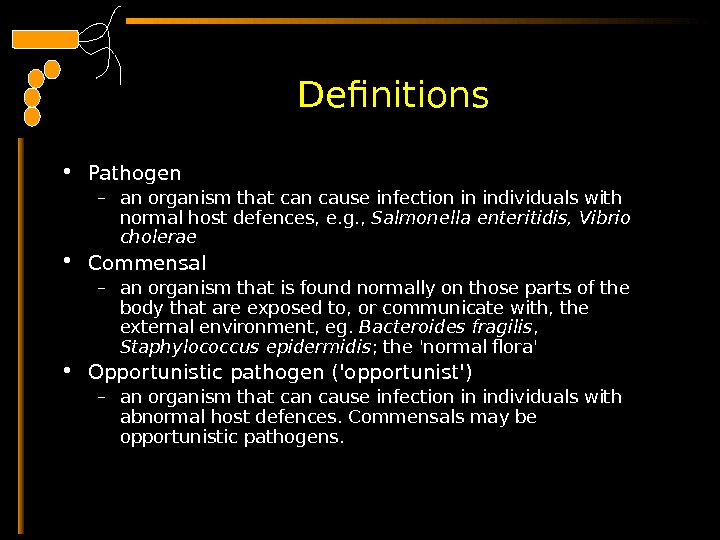
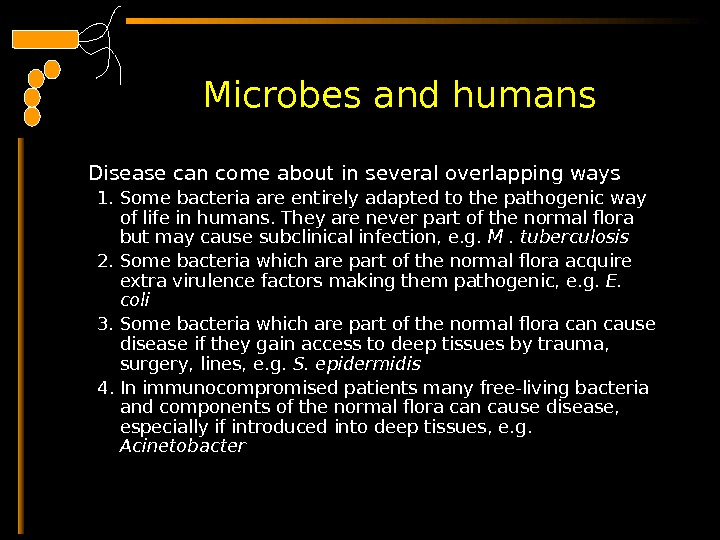
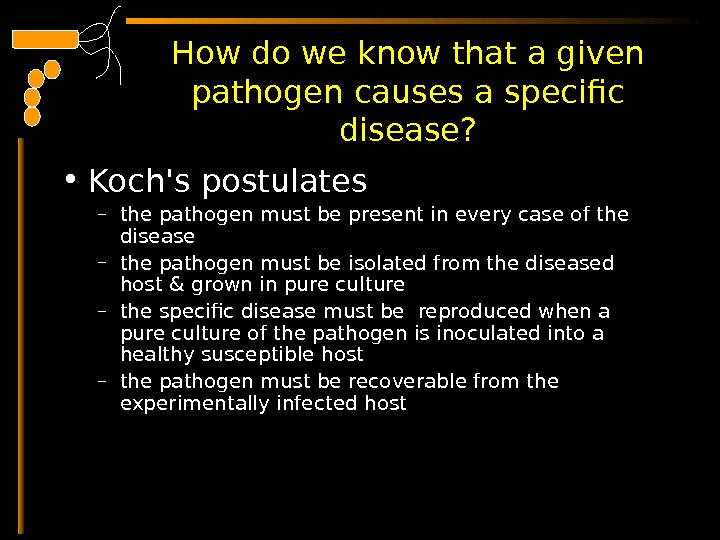
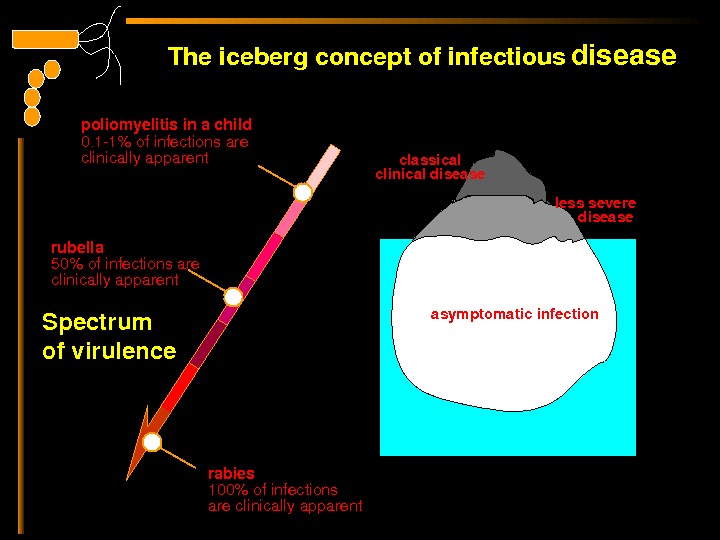
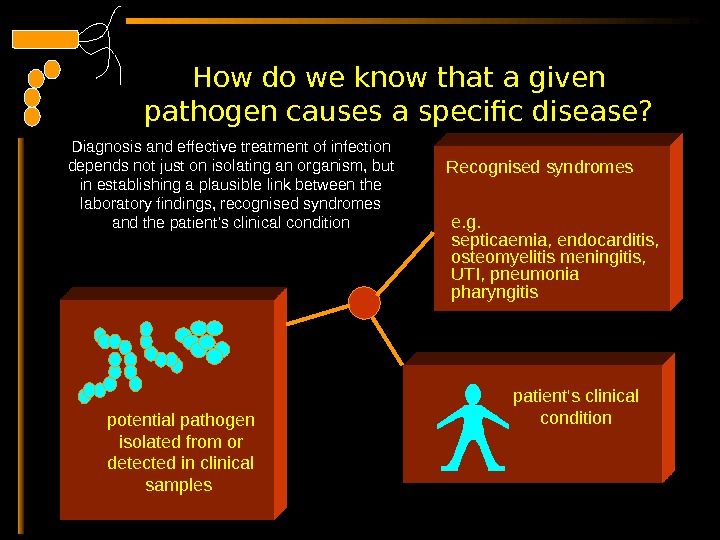
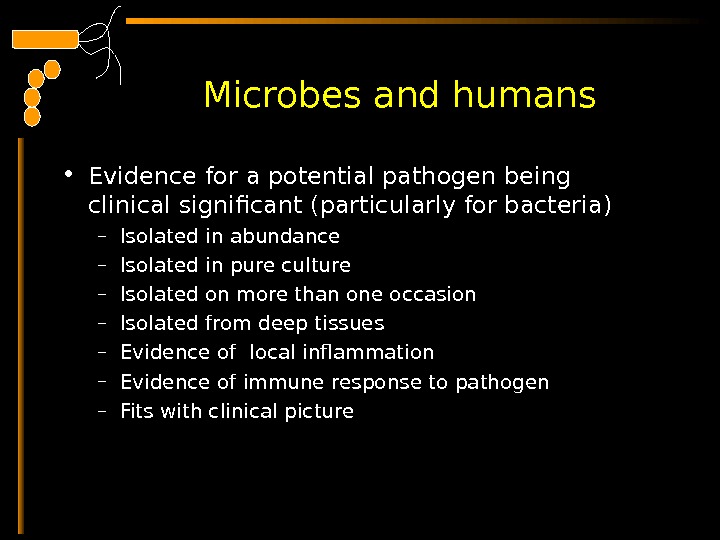

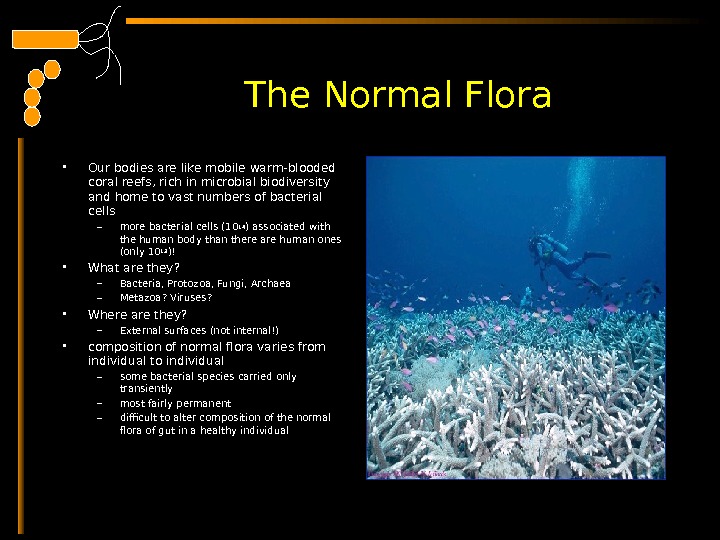
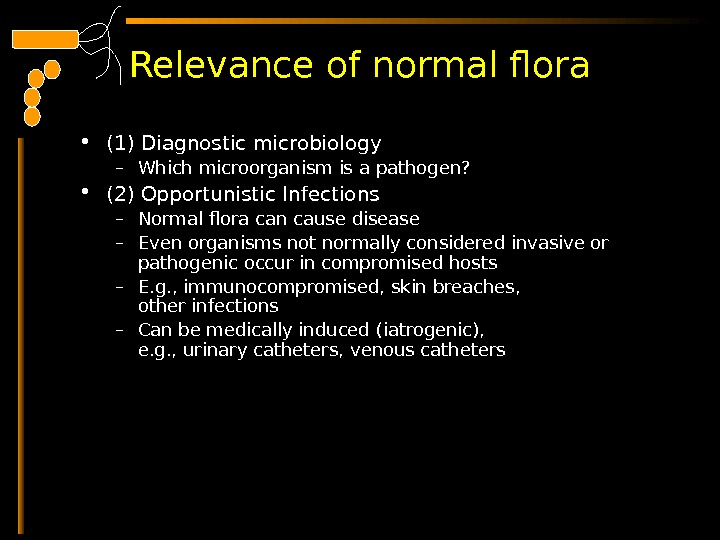


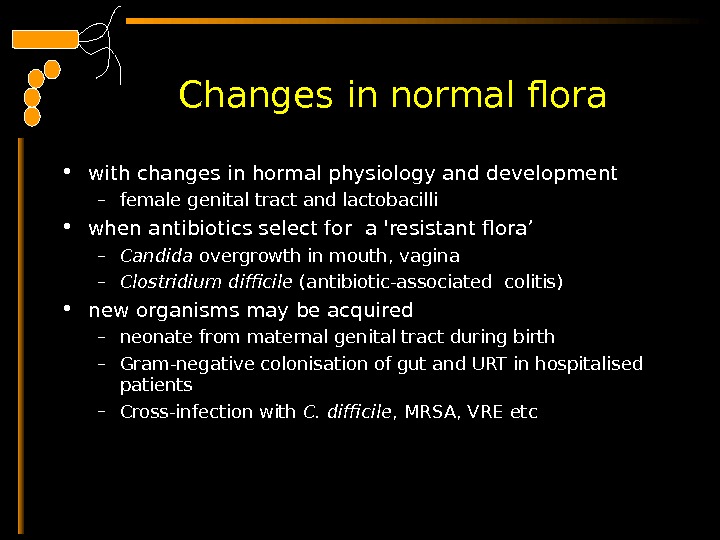
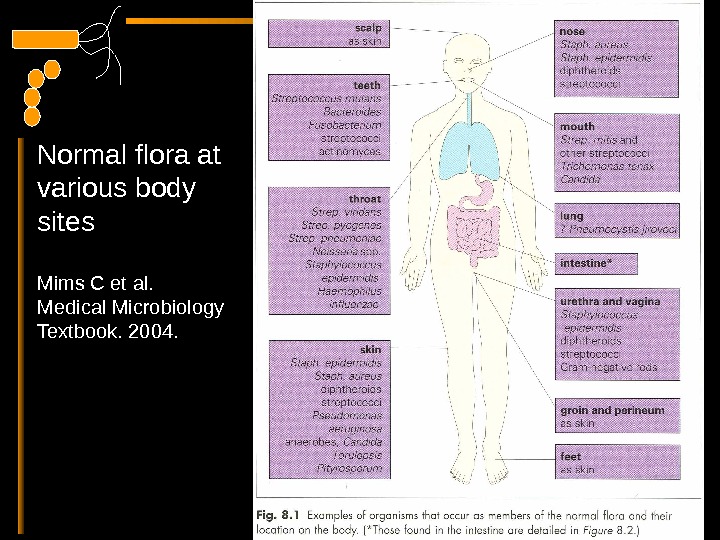

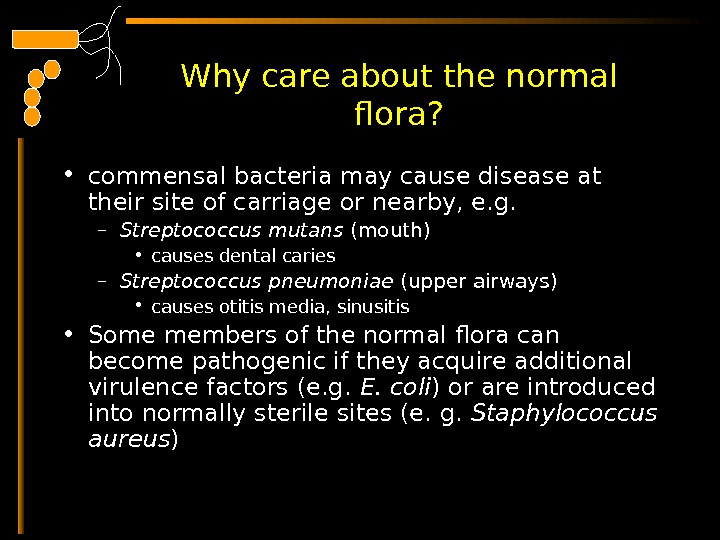



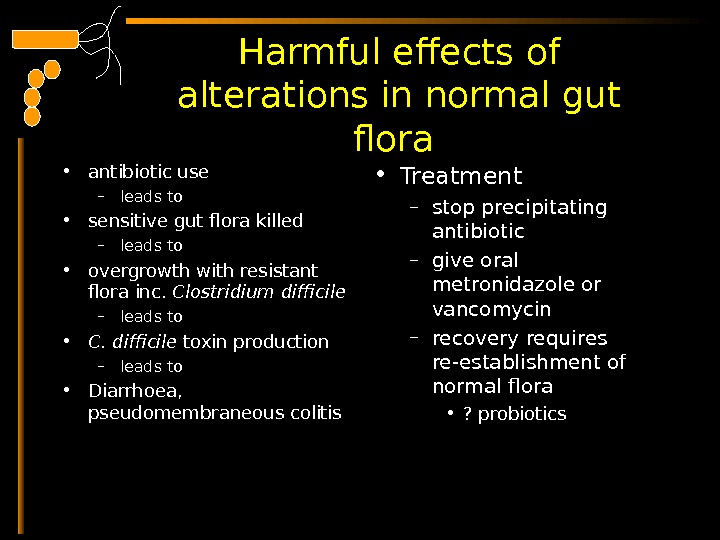
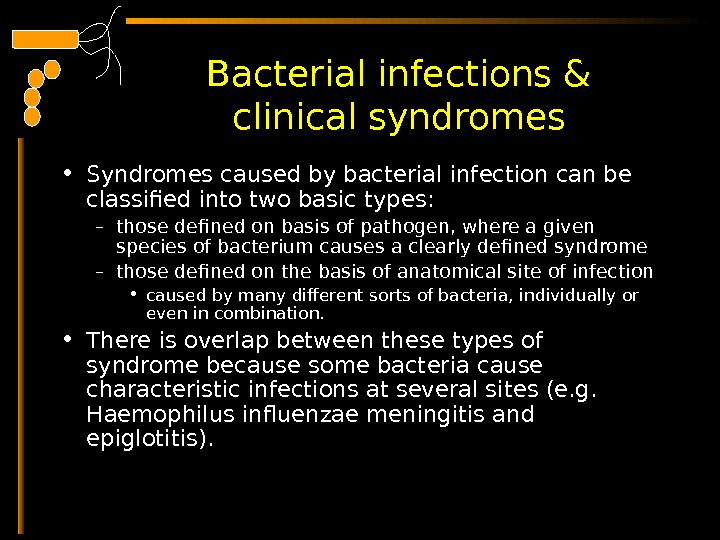

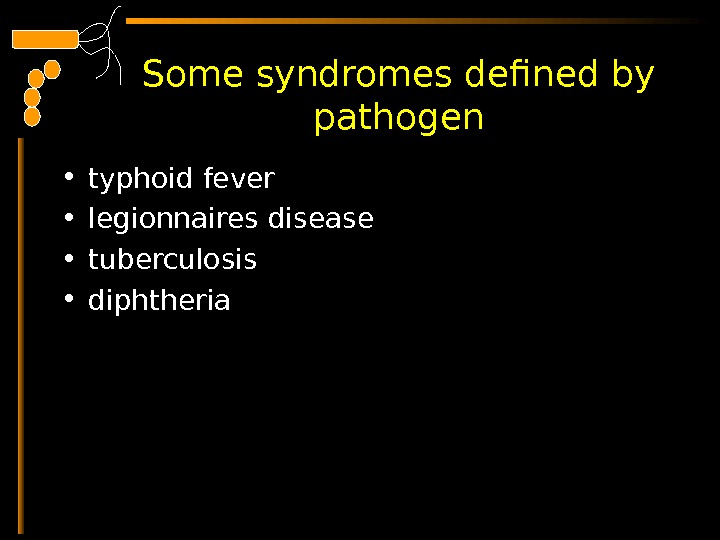
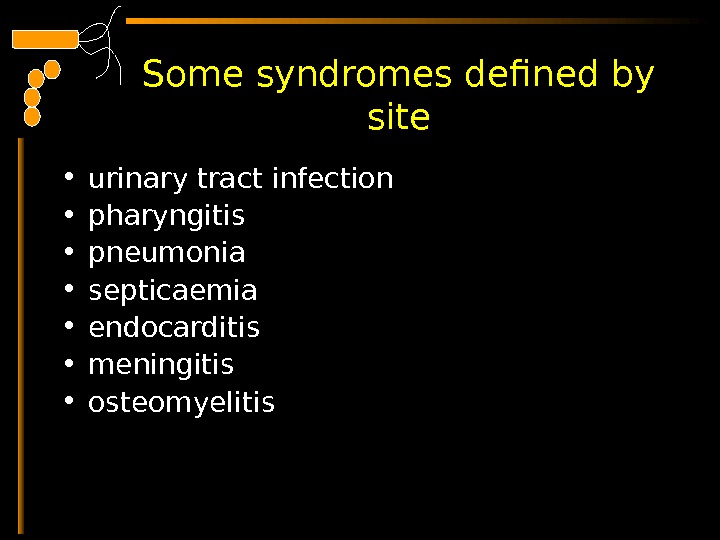
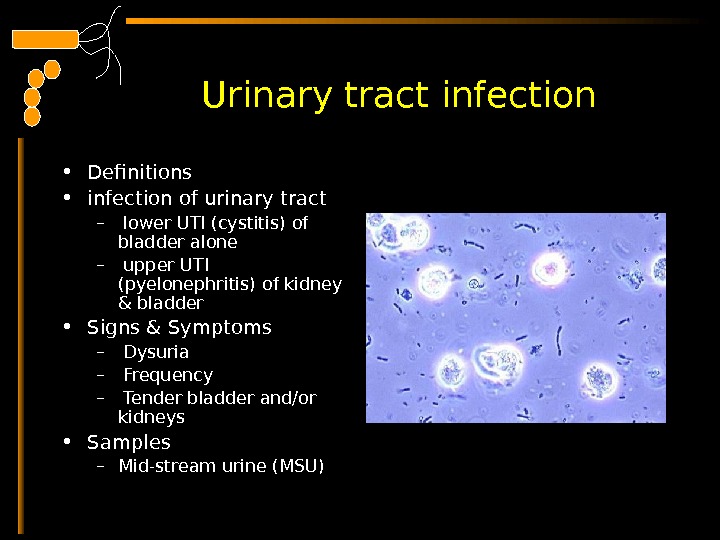
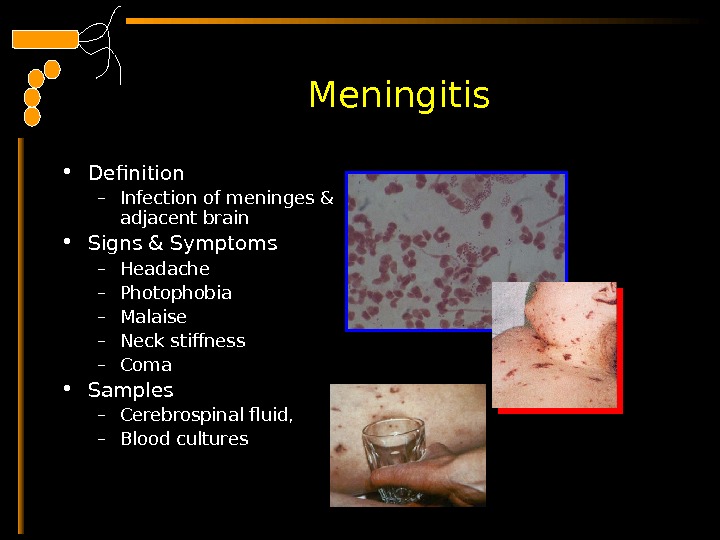
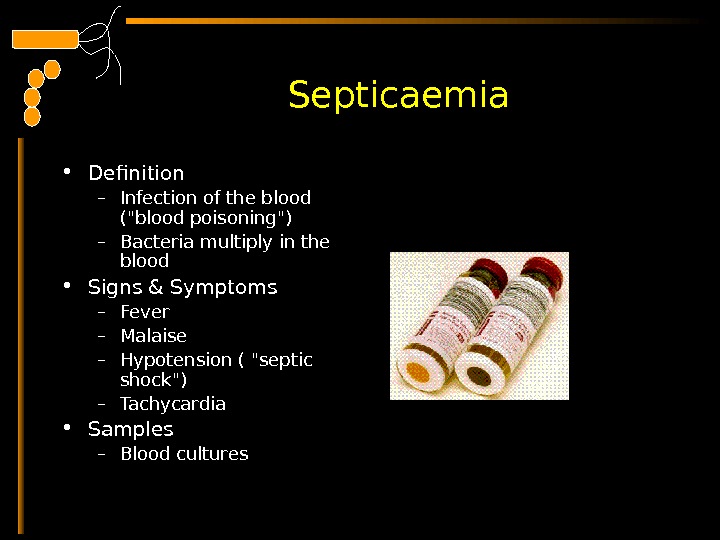

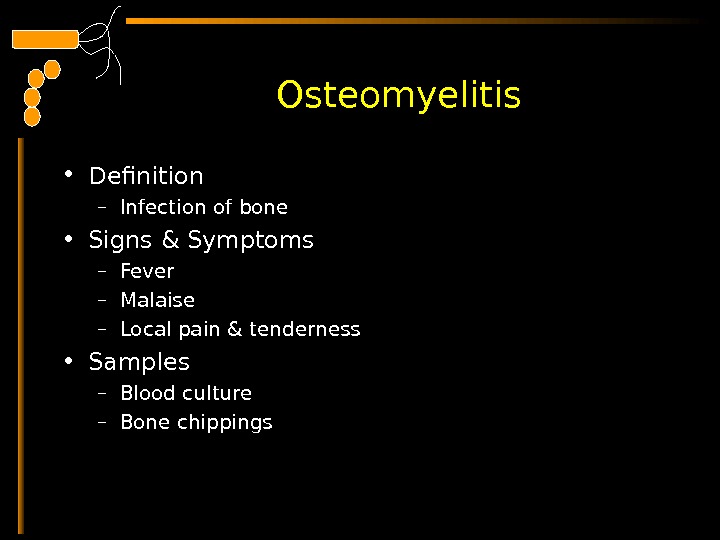
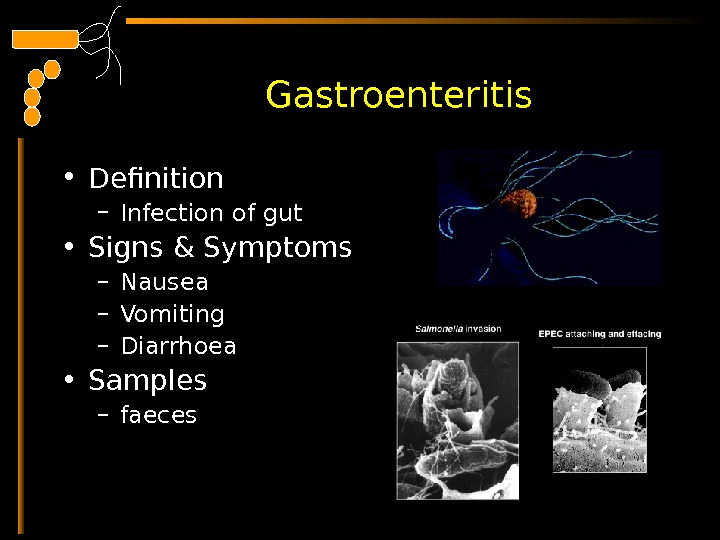
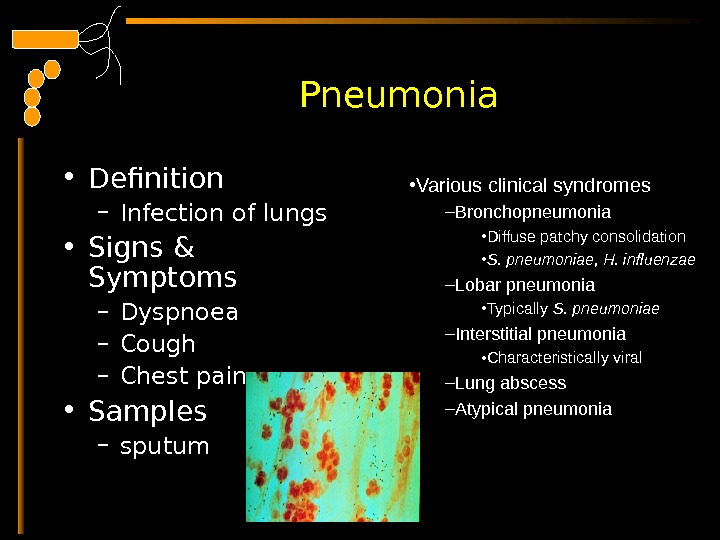
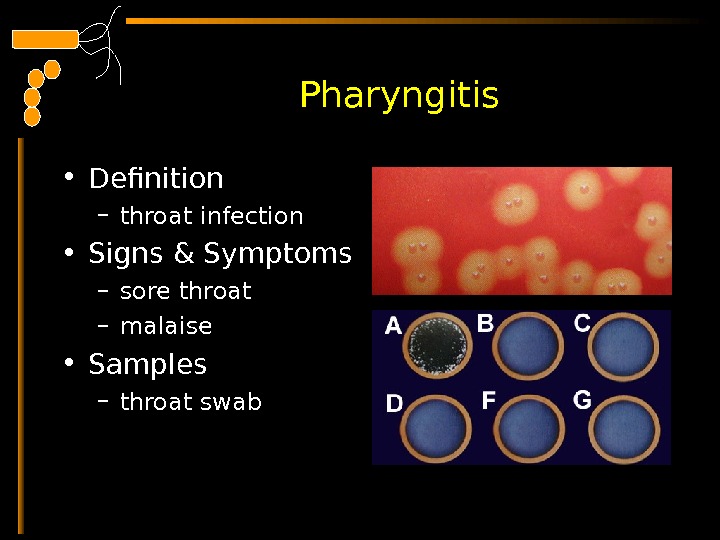

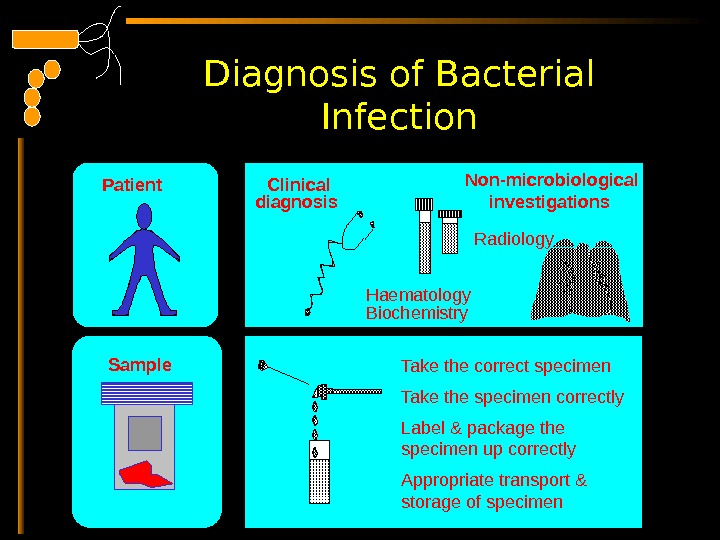
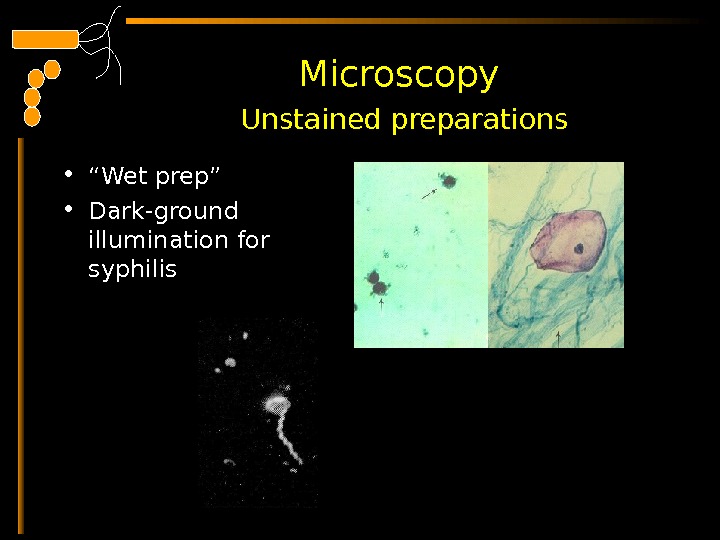
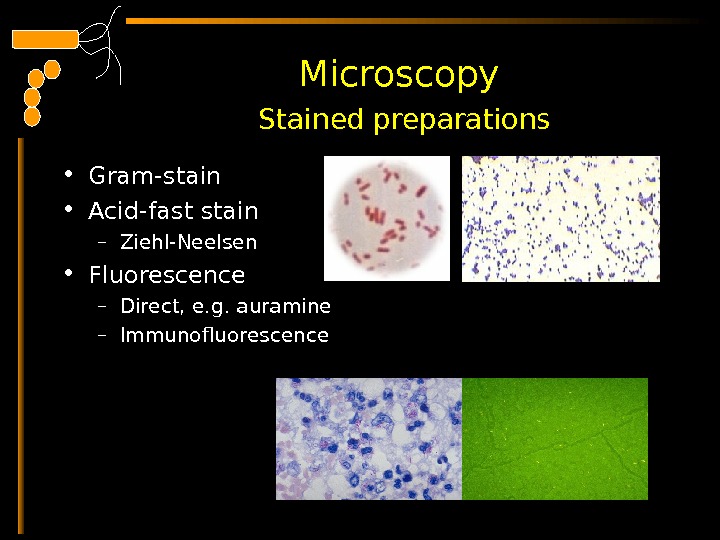
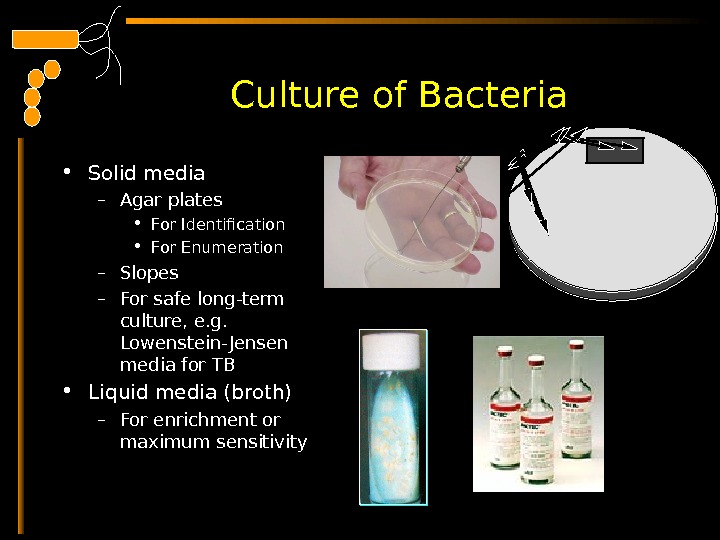

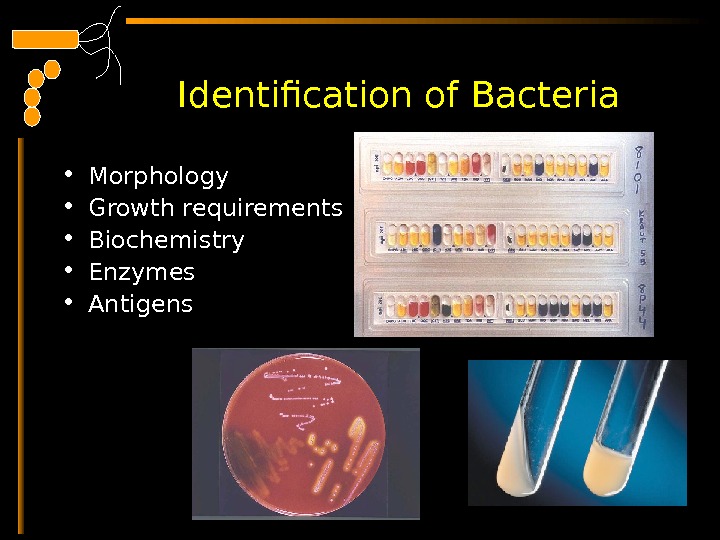
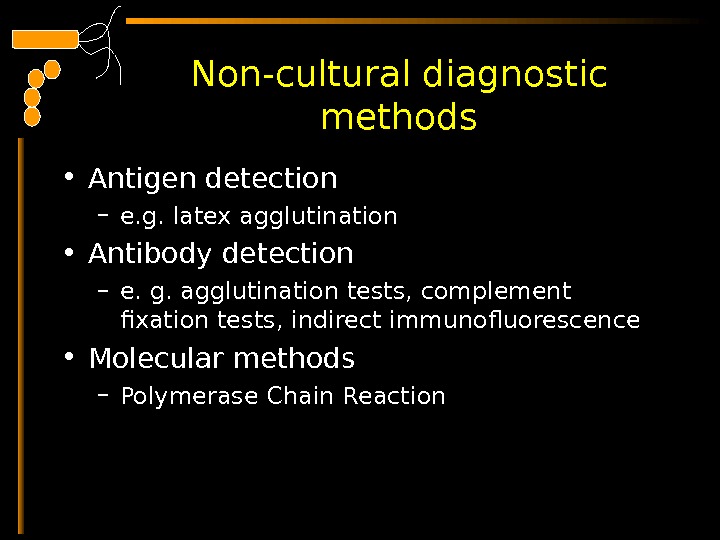

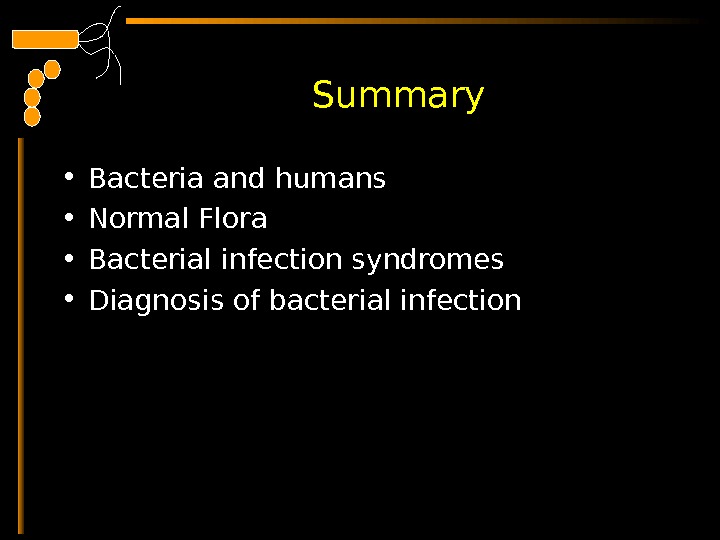
- Размер: 4.5 Mегабайта
- Количество слайдов: 43
Описание презентации Презентация bactsyndromes BMed Sc new по слайдам
 Examples of bacterial infections and their interaction with the host Professor Mark Pallen. Weaskthelabforadiagnosis, expectingayesorno, butoften endupwithjustamaybe…
Examples of bacterial infections and their interaction with the host Professor Mark Pallen. Weaskthelabforadiagnosis, expectingayesorno, butoften endupwithjustamaybe…
 Microbes and humans Veryfewmicrobesare alwayspathogenic Manymicrobesare potentiallypathogenic Mostmicrobesare neverpathogenic
Microbes and humans Veryfewmicrobesare alwayspathogenic Manymicrobesare potentiallypathogenic Mostmicrobesare neverpathogenic
 Definitions • Pathogen – an organism that can cause infection in individuals with normal host defences, e. g. , Salmonella enteritidis, Vibrio cholerae • Commensal – an organism that is found normally on those parts of the body that are exposed to, or communicate with, the external environment, eg. Bacteroides fragilis , Staphylococcus epidermidis ; the ‘normal flora’ • Opportunistic pathogen (‘opportunist’) – an organism that can cause infection in individuals with abnormal host defences. Commensals may be opportunistic pathogens.
Definitions • Pathogen – an organism that can cause infection in individuals with normal host defences, e. g. , Salmonella enteritidis, Vibrio cholerae • Commensal – an organism that is found normally on those parts of the body that are exposed to, or communicate with, the external environment, eg. Bacteroides fragilis , Staphylococcus epidermidis ; the ‘normal flora’ • Opportunistic pathogen (‘opportunist’) – an organism that can cause infection in individuals with abnormal host defences. Commensals may be opportunistic pathogens.
 Microbes and humans Disease can come about in several overlapping ways 1. Some bacteria are entirely adapted to the pathogenic way of life in humans. They are never part of the normal flora but may cause subclinical infection, e. g. M. tuberculosis 2. Some bacteria which are part of the normal flora acquire extra virulence factors making them pathogenic, e. g. E. coli 3. Some bacteria which are part of the normal flora can cause disease if they gain access to deep tissues by trauma, surgery, lines, e. g. S. epidermidis 4. In immunocompromised patients many free-living bacteria and components of the normal flora can cause disease, especially if introduced into deep tissues, e. g. Acinetobacter
Microbes and humans Disease can come about in several overlapping ways 1. Some bacteria are entirely adapted to the pathogenic way of life in humans. They are never part of the normal flora but may cause subclinical infection, e. g. M. tuberculosis 2. Some bacteria which are part of the normal flora acquire extra virulence factors making them pathogenic, e. g. E. coli 3. Some bacteria which are part of the normal flora can cause disease if they gain access to deep tissues by trauma, surgery, lines, e. g. S. epidermidis 4. In immunocompromised patients many free-living bacteria and components of the normal flora can cause disease, especially if introduced into deep tissues, e. g. Acinetobacter
 How do we know that a given pathogen causes a specific disease? • Koch’s postulates – the pathogen must be present in every case of the disease – the pathogen must be isolated from the diseased host & grown in pure culture – the specific disease must be reproduced when a pure culture of the pathogen is inoculated into a healthy susceptible host – the pathogen must be recoverable from the experimentally infected host
How do we know that a given pathogen causes a specific disease? • Koch’s postulates – the pathogen must be present in every case of the disease – the pathogen must be isolated from the diseased host & grown in pure culture – the specific disease must be reproduced when a pure culture of the pathogen is inoculated into a healthy susceptible host – the pathogen must be recoverable from the experimentally infected host
 Spectrum of virulence poliomyelitisinachild 0. 11%ofinfectionsare clinicallyapparent rubella 50%ofinfectionsare clinicallyapparent rabies 100%ofinfections areclinicallyapparent. Theicebergconceptofinfectious disease asymptomatic infectionclassical clinicaldisease lesssevere disease
Spectrum of virulence poliomyelitisinachild 0. 11%ofinfectionsare clinicallyapparent rubella 50%ofinfectionsare clinicallyapparent rabies 100%ofinfections areclinicallyapparent. Theicebergconceptofinfectious disease asymptomatic infectionclassical clinicaldisease lesssevere disease
 potential pathogen isolated from or detected in clinical samples Recognised syndromes patient’s clinical condition e. g. septicaemia, endocarditis, osteomyelitis meningitis, UTI, pneumonia pharyngitis. How do we know that a given pathogen causes a specific disease? Diagnosis and effective treatment of infection depends not just on isolating an organism, but in establishing a plausible link between the laboratory findings, recognised syndromes and the patient’s clinical condition
potential pathogen isolated from or detected in clinical samples Recognised syndromes patient’s clinical condition e. g. septicaemia, endocarditis, osteomyelitis meningitis, UTI, pneumonia pharyngitis. How do we know that a given pathogen causes a specific disease? Diagnosis and effective treatment of infection depends not just on isolating an organism, but in establishing a plausible link between the laboratory findings, recognised syndromes and the patient’s clinical condition
 Microbes and humans • Evidence for a potential pathogen being clinical significant (particularly for bacteria) – Isolated in abundance – Isolated in pure culture – Isolated on more than one occasion – Isolated from deep tissues – Evidence of local inflammation – Evidence of immune response to pathogen – Fits with clinical picture
Microbes and humans • Evidence for a potential pathogen being clinical significant (particularly for bacteria) – Isolated in abundance – Isolated in pure culture – Isolated on more than one occasion – Isolated from deep tissues – Evidence of local inflammation – Evidence of immune response to pathogen – Fits with clinical picture
 The Normal Flora “ A New Year Greeting After an article by Mary J. Marples in Scientific American , January, 1969 On this day tradition allots to taking stock of our lives, my greetings to all of you, Yeasts, Bacteria, Viruses, Aerobics and Anaerobics: A Very Happy New Year to all for whom my ectoderm is as Middle-Earth to me. For creatures your size I offer a free choice of habitat, so settle yourselves in the zone that suits you best, in the pools of my pores or the tropical forests of arm-pit and crotch, in the deserts of my fore-arms, or the cool woods of my scalp. Build colonies: I will supply adequate warmth and moisture, the sebum and lipids you need, on condition you never do me annoy with your presence, but behave as good guests should, not rioting into acne or athlete’s-foot or a boil. . ” W. H. Auden
The Normal Flora “ A New Year Greeting After an article by Mary J. Marples in Scientific American , January, 1969 On this day tradition allots to taking stock of our lives, my greetings to all of you, Yeasts, Bacteria, Viruses, Aerobics and Anaerobics: A Very Happy New Year to all for whom my ectoderm is as Middle-Earth to me. For creatures your size I offer a free choice of habitat, so settle yourselves in the zone that suits you best, in the pools of my pores or the tropical forests of arm-pit and crotch, in the deserts of my fore-arms, or the cool woods of my scalp. Build colonies: I will supply adequate warmth and moisture, the sebum and lipids you need, on condition you never do me annoy with your presence, but behave as good guests should, not rioting into acne or athlete’s-foot or a boil. . ” W. H. Auden
 The Normal Flora • Our bodies are like mobile warm-blooded coral reefs, rich in microbial biodiversity and home to vast numbers of bacterial cells – more bacterial cells (1014 ) associated with the human body than there are human ones (only 10 13 )! • What are they? – Bacteria, Protozoa, Fungi, Archaea – Metazoa? Viruses? • Where are they? – External surfaces (not internal!) • composition of normal flora varies from individual to individual – some bacterial species carried only transiently – most fairly permanent – difficult to alter composition of the normal flora of gut in a healthy individual
The Normal Flora • Our bodies are like mobile warm-blooded coral reefs, rich in microbial biodiversity and home to vast numbers of bacterial cells – more bacterial cells (1014 ) associated with the human body than there are human ones (only 10 13 )! • What are they? – Bacteria, Protozoa, Fungi, Archaea – Metazoa? Viruses? • Where are they? – External surfaces (not internal!) • composition of normal flora varies from individual to individual – some bacterial species carried only transiently – most fairly permanent – difficult to alter composition of the normal flora of gut in a healthy individual
 Relevance of normal flora • (1) Diagnostic microbiology – Which microorganism is a pathogen? • (2) Opportunistic Infections – Normal flora can cause disease – Even organisms not normally considered invasive or pathogenic occur in compromised hosts – E. g. , immunocompromised, skin breaches, other infections – Can be medically induced (iatrogenic), e. g. , urinary catheters, venous catheters
Relevance of normal flora • (1) Diagnostic microbiology – Which microorganism is a pathogen? • (2) Opportunistic Infections – Normal flora can cause disease – Even organisms not normally considered invasive or pathogenic occur in compromised hosts – E. g. , immunocompromised, skin breaches, other infections – Can be medically induced (iatrogenic), e. g. , urinary catheters, venous catheters
 Microbial Loads on “External” Surfaces • Large intestine 1014 • Skin 10 12 • Vagina 10 10 • Mouth 10 10 • Nose 10 10 • Throat
Microbial Loads on “External” Surfaces • Large intestine 1014 • Skin 10 12 • Vagina 10 10 • Mouth 10 10 • Nose 10 10 • Throat
 Anaerobic Normal Flora Site skin large intestine vagina Ratio of Anaerobes: Aerobes ~ 1: 1 1000: 1 10:
Anaerobic Normal Flora Site skin large intestine vagina Ratio of Anaerobes: Aerobes ~ 1: 1 1000: 1 10:
 Changes in normal flora • with changes in hormal physiology and development – female genital tract and lactobacilli • when antibiotics select for a ‘resistant flora’ – Candida overgrowth in mouth, vagina – Clostridium difficile (antibiotic-associated colitis) • new organisms may be acquired – neonate from maternal genital tract during birth – Gram-negative colonisation of gut and URT in hospitalised patients – Cross-infection with C. difficile , MRSA, VRE etc
Changes in normal flora • with changes in hormal physiology and development – female genital tract and lactobacilli • when antibiotics select for a ‘resistant flora’ – Candida overgrowth in mouth, vagina – Clostridium difficile (antibiotic-associated colitis) • new organisms may be acquired – neonate from maternal genital tract during birth – Gram-negative colonisation of gut and URT in hospitalised patients – Cross-infection with C. difficile , MRSA, VRE etc
 Normal flora at various body sites Mims C et al. Medical Microbiology Textbook. 2004.
Normal flora at various body sites Mims C et al. Medical Microbiology Textbook. 2004.
 Why care about the normal flora? it may be good for you! • colonization resistance: – competition for space and nutrients with pathogens • release of bacteriocins and colicins (antibacterial substances) to prevent pathogen growth • vitamin K production in gut • continued antigenic stimulation from commensals – cross-reacting protective immunity against pathogens – commensal neisseriaceae and Neisseria meningitidis
Why care about the normal flora? it may be good for you! • colonization resistance: – competition for space and nutrients with pathogens • release of bacteriocins and colicins (antibacterial substances) to prevent pathogen growth • vitamin K production in gut • continued antigenic stimulation from commensals – cross-reacting protective immunity against pathogens – commensal neisseriaceae and Neisseria meningitidis
 Why care about the normal flora? • commensal bacteria may cause disease at their site of carriage or nearby, e. g. – Streptococcus mutans (mouth) • causes dental caries – Streptococcus pneumoniae (upper airways) • causes otitis media, sinusitis • Some members of the normal flora can become pathogenic if they acquire additional virulence factors (e. g. E. coli ) or are introduced into normally sterile sites (e. g. Staphylococcus aureus )
Why care about the normal flora? • commensal bacteria may cause disease at their site of carriage or nearby, e. g. – Streptococcus mutans (mouth) • causes dental caries – Streptococcus pneumoniae (upper airways) • causes otitis media, sinusitis • Some members of the normal flora can become pathogenic if they acquire additional virulence factors (e. g. E. coli ) or are introduced into normally sterile sites (e. g. Staphylococcus aureus )
 Why care about the normal flora? Normal flora as contaminants • To allow interpretation of – Gram stains on clinical samples – Culture results • Skin flora in blood cultures – BUT coagulase-negative staphylococci can be pathogens in device-associated sepsis, so can be hard to interpret • Perineal flora in urine – Take an MSU! – Mixed culture=contamination • Throat flora in sputum – Need to assess whether • Heavy pure growth • Obtained repeatedly • Fits clinical picture
Why care about the normal flora? Normal flora as contaminants • To allow interpretation of – Gram stains on clinical samples – Culture results • Skin flora in blood cultures – BUT coagulase-negative staphylococci can be pathogens in device-associated sepsis, so can be hard to interpret • Perineal flora in urine – Take an MSU! – Mixed culture=contamination • Throat flora in sputum – Need to assess whether • Heavy pure growth • Obtained repeatedly • Fits clinical picture
 Normal gut flora Mims C et al. Medical Microbiology Textbook. 2004.
Normal gut flora Mims C et al. Medical Microbiology Textbook. 2004.
 Harmful effects of gut bacteria • escape of normal flora to abnormal sites – perforated appendix leads to peritonitis with – Bacteroides spp. and facultative aerobes inc. E. coli • cholecystitis and cholangitis – often mixed infection, E. coli predominant, also including enterococci • urinary tract infection – most frequent organism in normal urinary tract is E. coli • vaginal candiosis
Harmful effects of gut bacteria • escape of normal flora to abnormal sites – perforated appendix leads to peritonitis with – Bacteroides spp. and facultative aerobes inc. E. coli • cholecystitis and cholangitis – often mixed infection, E. coli predominant, also including enterococci • urinary tract infection – most frequent organism in normal urinary tract is E. coli • vaginal candiosis
 Harmful effects of alterations in normal gut flora • antibiotic use – leads to • sensitive gut flora killed – leads to • overgrowth with resistant flora inc. Clostridium difficile – leads to • C. difficile toxin production – leads to • Diarrhoea, pseudomembraneous colitis • Treatment – stop precipitating antibiotic – give oral metronidazole or vancomycin – recovery requires re-establishment of normal flora • ? probiotics
Harmful effects of alterations in normal gut flora • antibiotic use – leads to • sensitive gut flora killed – leads to • overgrowth with resistant flora inc. Clostridium difficile – leads to • C. difficile toxin production – leads to • Diarrhoea, pseudomembraneous colitis • Treatment – stop precipitating antibiotic – give oral metronidazole or vancomycin – recovery requires re-establishment of normal flora • ? probiotics
 Bacterial infections & clinical syndromes • Syndromes caused by bacterial infection can be classified into two basic types: – those defined on basis of pathogen, where a given species of bacterium causes a clearly defined syndrome – those defined on the basis of anatomical site of infection • caused by many different sorts of bacteria, individually or even in combination. • There is overlap between these types of syndrome because some bacteria cause characteristic infections at several sites (e. g. Haemophilus influenzae meningitis and epiglotitis).
Bacterial infections & clinical syndromes • Syndromes caused by bacterial infection can be classified into two basic types: – those defined on basis of pathogen, where a given species of bacterium causes a clearly defined syndrome – those defined on the basis of anatomical site of infection • caused by many different sorts of bacteria, individually or even in combination. • There is overlap between these types of syndrome because some bacteria cause characteristic infections at several sites (e. g. Haemophilus influenzae meningitis and epiglotitis).
 The top 7 killers Mims C et al. Medical Microbiology. 2004.
The top 7 killers Mims C et al. Medical Microbiology. 2004.
 Some syndromes defined by pathogen • typhoid fever • legionnaires disease • tuberculosis • diphtheria
Some syndromes defined by pathogen • typhoid fever • legionnaires disease • tuberculosis • diphtheria
 Some syndromes defined by site • urinary tract infection • pharyngitis • pneumonia • septicaemia • endocarditis • meningitis • osteomyelitis
Some syndromes defined by site • urinary tract infection • pharyngitis • pneumonia • septicaemia • endocarditis • meningitis • osteomyelitis
 Urinary tract infection • Definitions • infection of urinary tract – lower UTI (cystitis) of bladder alone – upper UTI (pyelonephritis) of kidney & bladder • Signs & Symptoms – Dysuria – Frequency – Tender bladder and/or kidneys • Samples – Mid-stream urine (MSU)
Urinary tract infection • Definitions • infection of urinary tract – lower UTI (cystitis) of bladder alone – upper UTI (pyelonephritis) of kidney & bladder • Signs & Symptoms – Dysuria – Frequency – Tender bladder and/or kidneys • Samples – Mid-stream urine (MSU)
 Meningitis • Definition – Infection of meninges & adjacent brain • Signs & Symptoms – Headache – Photophobia – Malaise – Neck stiffness – Coma • Samples – Cerebrospinal fluid, – Blood cultures
Meningitis • Definition – Infection of meninges & adjacent brain • Signs & Symptoms – Headache – Photophobia – Malaise – Neck stiffness – Coma • Samples – Cerebrospinal fluid, – Blood cultures
 Septicaemia • Definition – Infection of the blood («blood poisoning») – Bacteria multiply in the blood • Signs & Symptoms – Fever – Malaise – Hypotension ( «septic shock») – Tachycardia • Samples – Blood cultures
Septicaemia • Definition – Infection of the blood («blood poisoning») – Bacteria multiply in the blood • Signs & Symptoms – Fever – Malaise – Hypotension ( «septic shock») – Tachycardia • Samples – Blood cultures
 Endocarditis • Definition – Infection of the heart valves • Signs & Symptoms – Fever – Malaise – Weight loss – Heart failure • Samples – Blood cultures
Endocarditis • Definition – Infection of the heart valves • Signs & Symptoms – Fever – Malaise – Weight loss – Heart failure • Samples – Blood cultures
 Osteomyelitis • Definition – Infection of bone • Signs & Symptoms – Fever – Malaise – Local pain & tenderness • Samples – Blood culture – Bone chippings
Osteomyelitis • Definition – Infection of bone • Signs & Symptoms – Fever – Malaise – Local pain & tenderness • Samples – Blood culture – Bone chippings
 Gastroenteritis • Definition – Infection of gut • Signs & Symptoms – Nausea – Vomiting – Diarrhoea • Samples – faeces
Gastroenteritis • Definition – Infection of gut • Signs & Symptoms – Nausea – Vomiting – Diarrhoea • Samples – faeces
 Pneumonia • Definition – Infection of lungs • Signs & Symptoms – Dyspnoea – Cough – Chest pain • Samples – sputum • Various clinical syndromes – Bronchopneumonia • Diffuse patchy consolidation • S. pneumoniae, H. influenzae – Lobar pneumonia • Typically S. pneumoniae – Interstitial pneumonia • Characteristically viral – Lung abscess – Atypical pneumonia
Pneumonia • Definition – Infection of lungs • Signs & Symptoms – Dyspnoea – Cough – Chest pain • Samples – sputum • Various clinical syndromes – Bronchopneumonia • Diffuse patchy consolidation • S. pneumoniae, H. influenzae – Lobar pneumonia • Typically S. pneumoniae – Interstitial pneumonia • Characteristically viral – Lung abscess – Atypical pneumonia
 Pharyngitis • Definition – throat infection • Signs & Symptoms – sore throat – malaise • Samples – throat swab
Pharyngitis • Definition – throat infection • Signs & Symptoms – sore throat – malaise • Samples – throat swab
 Pyrexia of unknown origin • Definition – varies — a common definition is that of a fever of more than 2 -3 weeks duration, with no cause that be ascertained from initial tests. • Signs & Symptoms – various • Samples – many & varied
Pyrexia of unknown origin • Definition – varies — a common definition is that of a fever of more than 2 -3 weeks duration, with no cause that be ascertained from initial tests. • Signs & Symptoms – various • Samples – many & varied
 Diagnosis of Bacterial Infection Patient Clinical diagnosis Haematology Biochemistry Non-microbiological investigations Radiology Sample Take the correct specimen Take the specimen correctly Label & package the specimen up correctly Appropriate transport & storage of specimen
Diagnosis of Bacterial Infection Patient Clinical diagnosis Haematology Biochemistry Non-microbiological investigations Radiology Sample Take the correct specimen Take the specimen correctly Label & package the specimen up correctly Appropriate transport & storage of specimen
 Microscopy Unstained preparations • “ Wet prep” • Dark-ground illumination for syphilis
Microscopy Unstained preparations • “ Wet prep” • Dark-ground illumination for syphilis
 Microscopy Stained preparations • Gram-stain • Acid-fast stain – Ziehl-Neelsen • Fluorescence – Direct, e. g. auramine – Immunofluorescence
Microscopy Stained preparations • Gram-stain • Acid-fast stain – Ziehl-Neelsen • Fluorescence – Direct, e. g. auramine – Immunofluorescence
 Culture of Bacteria • Solid media – Agar plates • For Identification • For Enumeration – Slopes – For safe long-term culture, e. g. Lowenstein-Jensen media for TB • Liquid media (broth) – For enrichment or maximum sensitivity
Culture of Bacteria • Solid media – Agar plates • For Identification • For Enumeration – Slopes – For safe long-term culture, e. g. Lowenstein-Jensen media for TB • Liquid media (broth) – For enrichment or maximum sensitivity
 Advantages of Solid Media • isolation of single clonal colonies – get bacterium in pure culture • identify by colonial morphology • quantification by colony-forming units
Advantages of Solid Media • isolation of single clonal colonies – get bacterium in pure culture • identify by colonial morphology • quantification by colony-forming units
 Identification of Bacteria • Morphology • Growth requirements • Biochemistry • Enzymes • Antigens
Identification of Bacteria • Morphology • Growth requirements • Biochemistry • Enzymes • Antigens
 Non-cultural diagnostic methods • Antigen detection – e. g. latex agglutination • Antibody detection – e. g. agglutination tests, complement fixation tests, indirect immunofluorescence • Molecular methods – Polymerase Chain Reaction
Non-cultural diagnostic methods • Antigen detection – e. g. latex agglutination • Antibody detection – e. g. agglutination tests, complement fixation tests, indirect immunofluorescence • Molecular methods – Polymerase Chain Reaction
 MIC=2 mg/L 2 mg/ L 1 mg/ L 0. 5 m g/L 0. 25 mg/L 4 mg/ L 8 mg/ Lamountof antibiotic cloudinessmeans bacteriacangrowat thatconcentrationof antibiotic nozonearounddisc= resistantclearzone arounddisc= sensitivebacterium. Sensitivity tests • on solid media – disc diffusion technique • in liquid media – minimum inhibitory concentration (MIC) test • Breakpoint methods • E-test
MIC=2 mg/L 2 mg/ L 1 mg/ L 0. 5 m g/L 0. 25 mg/L 4 mg/ L 8 mg/ Lamountof antibiotic cloudinessmeans bacteriacangrowat thatconcentrationof antibiotic nozonearounddisc= resistantclearzone arounddisc= sensitivebacterium. Sensitivity tests • on solid media – disc diffusion technique • in liquid media – minimum inhibitory concentration (MIC) test • Breakpoint methods • E-test
 Summary • Bacteria and humans • Normal Flora • Bacterial infection syndromes • Diagnosis of bacterial infection
Summary • Bacteria and humans • Normal Flora • Bacterial infection syndromes • Diagnosis of bacterial infection

